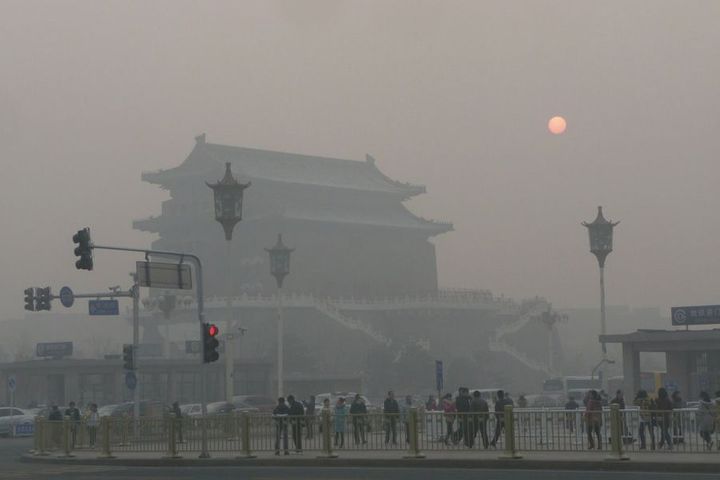 Local Sources Produce 2/3 of Beijing's PM2.5 Air Pollution, Study Finds
Local Sources Produce 2/3 of Beijing's PM2.5 Air Pollution, Study Finds(Yicai Global) May 14 -- Local emissions are responsible for two-thirds of air-borne fine particulate matter in Beijing, according to the latest research from the city's environmental protection agency, confounding long-held beliefs that most of the capital's air pollution drifts in from surrounding industrial areas.
Regional sources of PM2.5, or particulate matter that is 2.5 micrometers in diameter or smaller and is dangerous to human health, accounted for just a third of the total, the Beijing Environmental Protection Bureau's findings show.
Emissions from vehicles, ships and construction machinery made up as much as 45 percent. The other sources were dust (16 percent), industry and household products (12 percent each), and coal-fired emissions (3 percent), while agriculture, natural and others sources contributed about 12 percent.
Beijing is encouraging the use of natural gas to replace coal for winter heating and is closing smokestack factories. But the city has the highest level of car ownership in China, with 5.64 million private vehicles at the end of last year. In a bid to stem the increase, it has cut the number of license plates issued each year to 100,000 in 2017 from 240,000 in 2013.
The previous analysis, released in 2014, indicated that as much as 36 percent of the PM2.5 matter in Beijing came from regional emissions, while local emissions accounted for up to 72 percent. It followed a ruthless air pollution action plan China's government instituted in 2013 aimed at reducing PM2.5 levels in the Beijing-Hebei-Tianjin area by up to a quarter, Hong Kong Free Press reported on March 14.
In the latest analysis, diesel vehicles generated the most PM2.5 matter among mobile sources, while construction and road grit were the biggest culprits in the dust category. Volatile organic compound discharges from the petrochemical, automotive and printing sectors made bigger contributions among industrial sources. The use of solvents in everyday life contributed about 40 percent among the share of household products. The contribution of coal-fired and industrial sources to the absolute concentration of PM2.5 has dropped greatly, however.
Air samples were taken in 11 different locations around Beijing each day and more than 300,000 sets of data were examined, said Liu Baoxian, deputy director of the BEPB's Beijing Municipal Environmental Protection Monitoring Center.
The 2014 results showed that motor vehicles, coal burning, industrial production and dust were the main sources of local pollution, making up 31.1 percent, 22.4 percent, 18.1 percent and 14.3 percent, respectively, while other emissions such as those from catering, automobile repair, livestock and poultry breeding and construction painting were 14.1 percent of PM2.5 sources.
Following the central government's 2013 action plan, at least three million homes had to switch to gas or electric heating from coal as the environment ministry force-fed tough anti-pollution targets to Beijing and 28 surrounding cities, which led to a gas shortage that made many shivering locals nostalgic for coal, Hong Kong Free Press reported on Dec. 18. The city also closed its last coal-burning heating plant in March last year, the Sydney Morning Herald reported at the time.
These initiatives enabled Beijing to record its greatest drop in PM2.5 levels in nine years or more last year, almost 20 percent better than the year before, Reuters reported on Dec. 29. The city suffered a setback with levels increasing almost fourfold from January to March, Beijing-based public-interest startup Smart Air Filters said on its website on April 8.
Beijing's air pollution woes are far from over, it seems, but at least for those afflicted by choking dust and facing drastically-reduced life expectancies a glimmer of hope now flickers on the horizon.
Editor: Benedict Armour